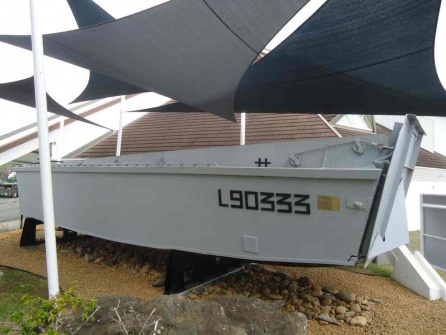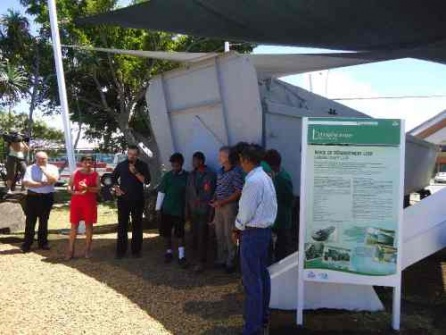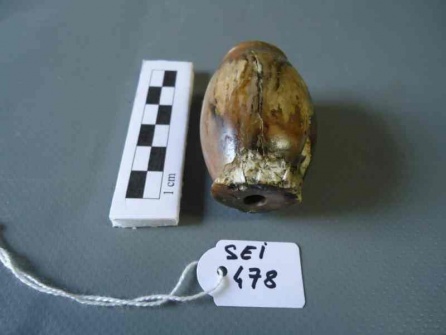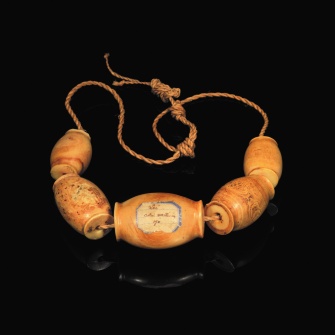This LCVP (Landing Craft Vehicule Personnel) was used by the American military during WW2. It is an amphibian wooden craft designed to ferry men and vehicles ashore. Similar landing barges were used at Guadalcanal and for the D-day landing in Normandy.
The LCVP exhibited in the Museum's garden belongs to the collections of the Southern Province.


These ivory beads were found in the wreck of the Seine, a French naval corvette which sank near Pouébo (East coast of the Main Island) in 1846. They were carved from sperm whale teeth. They were part of a royal Polynesian necklace ("lei"). Extremely rare, they were still used in Wallis and Futuna, and in Tonga, in the 19th century. Before wrecking in New Caledonia, the Seine had indeed called at Tonga and at Wallis and Futuna.
On this photo, you can see a royal Polynesian necklace, collected by Louis Joseph Bouge, Governor of Wallis and Futuna in 1911-1912.


From around 1730, sextants, with an arc of 60°, began to replace old octants as instruments of navigation. They were used to measure the height of a celestial body above the horizon, primarily to determine latitude.
This sextant was manufactured by the noted optician Mercier, and was found in the island of Vanikoro (Solomon Islands) in the wreck of La Boussole, the ship commanded by Monsieur de la Pérouse. It was through this discovery that the wreck was unambiguously identified, as it was listed with the Admiralty as part of the ship's equipment.
The lens, the original one fitted, is made up of a series of prismatic segments and known as a Fresnel lens. It was made in Paris in 1862 by the Société des Etablissements Henry-Lepaute. It was brought, dismantled, to New Caledonia and reassembled on top of the Amédée lighthouse in 1865. It was removed in 1985 when the lighthouse was automated, and replaced by a more modern lens.
"Report on the research to be undertaken concerning the fate of M. de la Pérouse, for the benefit of the National Assembly. M. Delattre, Member of the National Assembly for Abbeville, February 9, 1791."
The Maritime Museum recently acquired a rare and valuable addition to its collections. Following the maritime archaeological work of Association Salomon on the wrecks of La Pérouse's vessels, this document was generously donated by the Cercle des partenaires du Musée Lapérouse d'Albi. The 16 pages document, dated 1791, is a report to the National Assembly on the need to undertake a search for the missing La Pérouse expedition; it led to the decree by the National Assembly to launch the expedition commanded by Monsieur d'Entrecasteaux (1791).